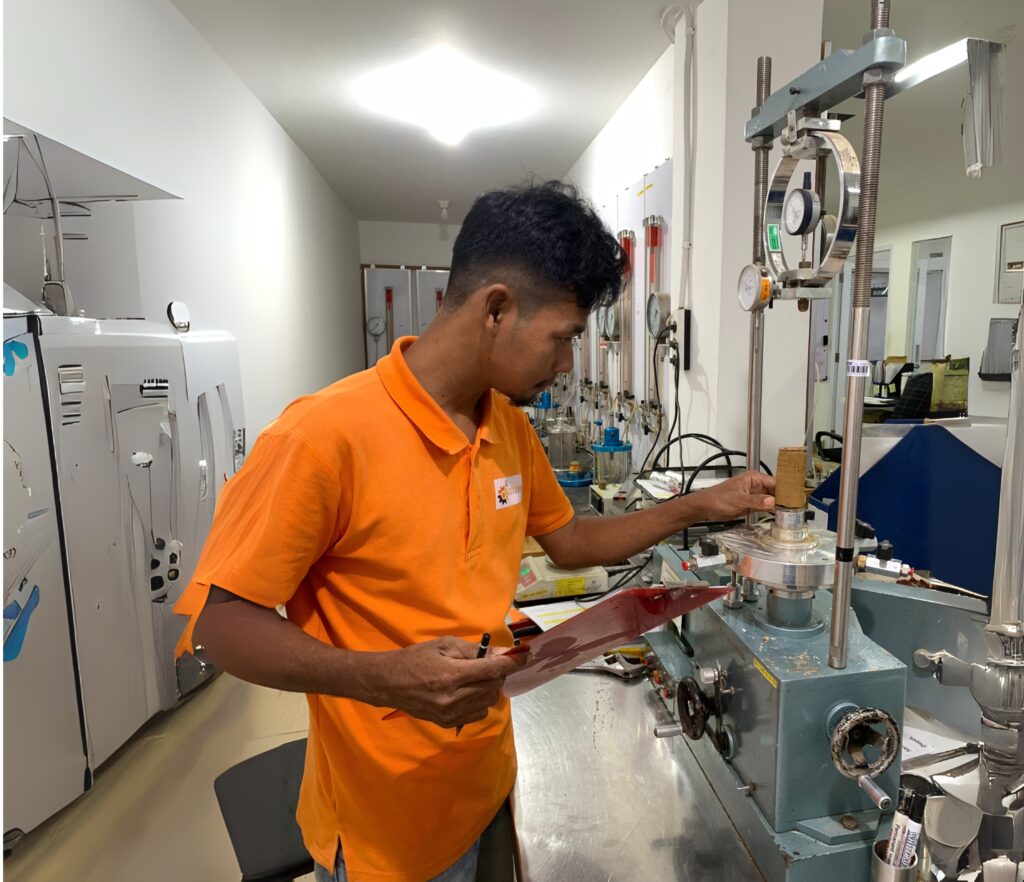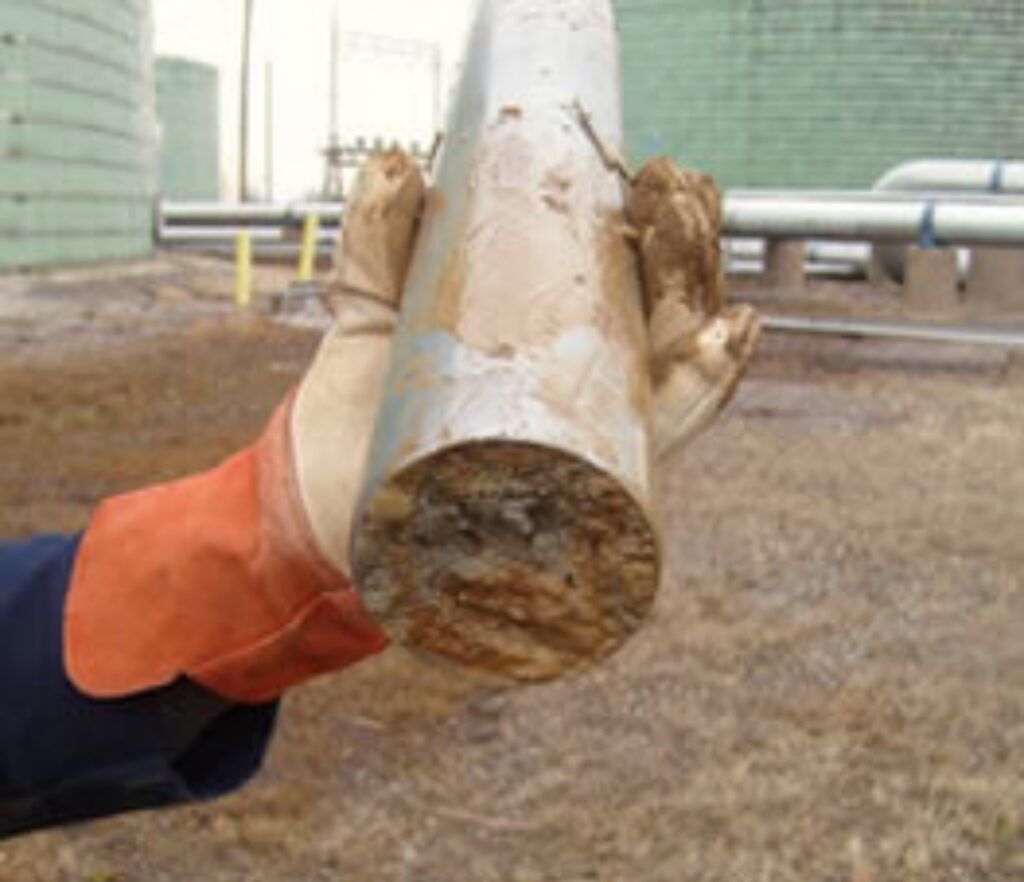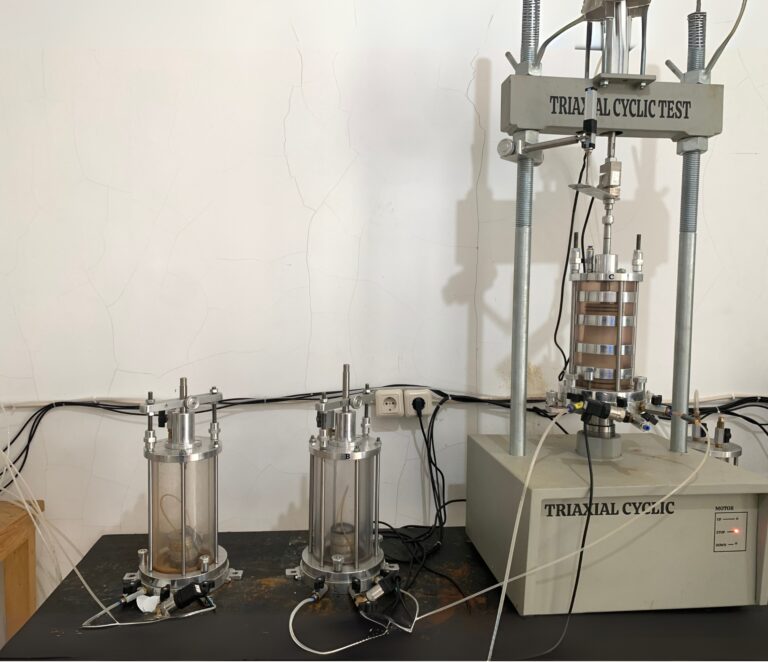TRIAXIAL CYCLIC
The cyclic triaxial test is a laboratory testing method used to determine the cyclic strength (often referred to as liquefaction potential) of saturated soils, whether in undisturbed or remolded conditions, using a load-controlled cyclic triaxial technique. The results are utilized to evaluate a soil’s capacity to resist shear stresses induced by seismic activity or other forms of cyclic loading.
Cyclic Triaxial Test System
The Geocomp cyclic triaxial system completely automates cyclic and static triaxial testing in a single, versatile unit. The system is comprised of only three main components and does not require extra air bladders, vacuum pumps, or wall-mounted elements that take up valuable lab space and require extra maintenance.
An advanced, high-performance linear actuator with low inertia servo drive system provides the fastest response time. This is combined with a high-resolution feedback control system (closed loop and adaptive) for the most accurate and repeatable results.
The benefit of a fully active load frame allows users to add their compression tests to the system at low cost to maximize their investment.
- Description
The cyclic triaxial test is commonly used to evaluate two key properties of soil:
A) its stiffness and damping behavior, or
B) its cyclic strength and potential for liquefaction.
After the soil specimen is fully saturated and consolidated, it is subjected to repeated axial loading using a load rod attached to the top platen. This loading follows a sinusoidal (wave-like) pattern.
Throughout the test, three main responses are monitored:
the applied cyclic load,
the resulting axial deformation, and
the development of pore water pressure within the sample.
As the test progresses, cyclic loading tends to increase pore water pressure in the soil. This leads to a reduction in effective stress and greater axial deformation.
Soil “failure” in this context can be defined in several ways, such as:
when the excess pore water pressure equals the initial effective confining pressure (known as initial liquefaction),
when the pore pressure ratio reaches 100%, or
when a critical level of cyclic or permanent strain is reached.


- Features & Benefits
Built-in Safety Features
Includes overload and over-travel protection to prevent system damage.Superior to Hydraulic Systems
Electro-mechanical design requires no hydraulic oil and eliminates risks associated with high-pressure (3000 psi) hydraulic fluids.Dynamic Waveform Control
Capable of applying sinusoidal or user-defined stress/strain waveforms with adjustable frequencies.Flexible Consolidation Options
Supports isotropic, anisotropic, and Ko-consolidated sample testing.Space Efficient Design
Compact system compared to traditional hydraulic setups or units requiring large cabinets or external pumps.Quiet Operation
Operates with minimal noise, ensuring a quieter laboratory environment.Data Volume Flexibility
Selectable data acquisition rate from 10 up to 500 readings per second.Remote Quality Control
Access and monitor test progress or results via internet or local network.Automated Confining Pressure Regulation
Integrated internal regulator ensures accurate and stable pressure control.High-Performance Actuator
Equipped with a custom linear actuator featuring a 1.8 kW peak, low-inertia servo drive system for rapid, continuous loading exceeding 200 mm/sec (8 in/sec).Precision Load & Displacement Control
High-resolution feedback system provides accurate and reliable control.Modular & Upgradeable
Easily expandable test capabilities through optional software and accessories.Low Maintenance, User-Friendly Design
Self-contained system minimizes maintenance and reduces operating costs.Fast, Automated Reporting
Generates instant reports with tables and plots, saving time on data entry and manual calculations.Flexible Data Export
Export test results in ASCII spreadsheet format—available as raw counts or engineering units—for integration with LIMS or third-party analysis tools.
Test Results
The results of a triaxial cyclic test include the time history of loading, deformation, and pore water pressure. The number of cycles required for a specimen to reach various levels of double-amplitude axial strain is often plotted against the cyclic stress ratio (CSR) to normalize the strength values of specimens tested at a given density under different confining pressures.
Data from tests conducted on the same material with similar density can be combined and plotted as CSR versus N (number of cycles), commonly referred to as the cyclic triaxial strength curve.


